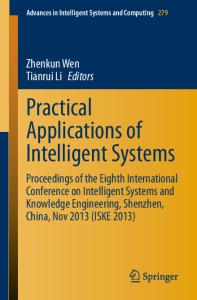Activities in the system cryolite-alumina
- PDF / 197,799 Bytes
- 5 Pages / 612 x 792 pts (letter) Page_size
- 51 Downloads / 364 Views
I.
INTRODUCTION
CRYOLITE-ALUMINA melts are central to the industrial process for the production of aluminum, and there has been much interest in understanding the chemical state of the dissolved alumina. A major tool for this purpose has been cryoscopic measurements, and those of Holm[1] and of Førland and Ratkje[2] are probably the most precise. The former studied the binary cryolite-alumina system and concluded that, in the limit of dilute solution, the cryoscopic number is three (i.e., each Al2O3 gives rise to three foreign particles in the melt, each containing only one oxygen). The latter studied fairly dilute solutions of cryolite and alumina in NaF so that the ratio Al/O could be varied. They concur with Holm’s conclusion, but more specifically suggest that, at Al/O ratios .5, complexes of the type Al2OFy dominate and that, as more oxide is added, Al2O2Fy species become important. These suggestions are in accord with recent Raman spectral work.[3] For quantitative calculations of equilibria one needs more than just a knowledge of what species are present; one needs to know how the activity of alumina varies with composition. To that end, Dewing in a 1974 review[4] found that the electrochemical measurements of Rolin[5] and of Vetyukov and Nguen Van Ban[6] were in excellent accord over the range from 1 wt pct up to saturation (14.1 wt pct at 1300 K[7]) and could be represented by aAl2O3 5 [(wt pct Al2O3)/(saturated wt pct Al2 O3 )]2.77
[1]
In a 1991 update of the work that choice was maintained. The exponent of 2.77 is reasonably consistent with each Al2O3 giving three particles on dissolution, although its constancy over the entire range is perhaps surprising since, at saturation, there is too much oxide to be able to form Al2OFy species exclusively. The reason for reopening the subject at this time is the unexpected outcome of a very simple experiment. In the course of work on the solubility of ZnO in cryolite melts,[9] an observation was made of the alumina content at which [8]
ERNEST W. DEWING, 648 Pimlico Pl., Kingston, ON, Canada K7M 5T8, is retired. J. THONSTAD, Professor of Electrochemistry, is with the Institute for Industrial Electrochemistry, Norwegian University of Science and Technology, 7034 Trondheim, Norway. Manuscript submitted June 14, 1996. METALLURGICAL AND MATERIALS TRANSACTIONS B
the melt was in equilibrium with the solid phases ZnO and ZnAl2O4 simultaneously. The Gibbs energy of the reaction ZnO 1 Al2O3 5 ZnAl2O4
[2]
is very accurately known and yields a value for the activity of alumina under that condition of 0.0336 at 1293 K.[9] Relation [1] then gives 4.0 wt pct Al2O3 for the equilibrium concentration. In fact, an experiment showed 1.45 5 0.2 wt pct. This is a big discrepancy, since relation[1] predicts an activity lower by a factor of 17 at that concentration. The 5150 cal uncertainty given by Jacob[10] for the energy of formation of ZnAl2O4 corresponds only to a factor of 1.06. Were it not for a problem which has not been considered in the past, Holm[1] provides everything
Data Loading...











